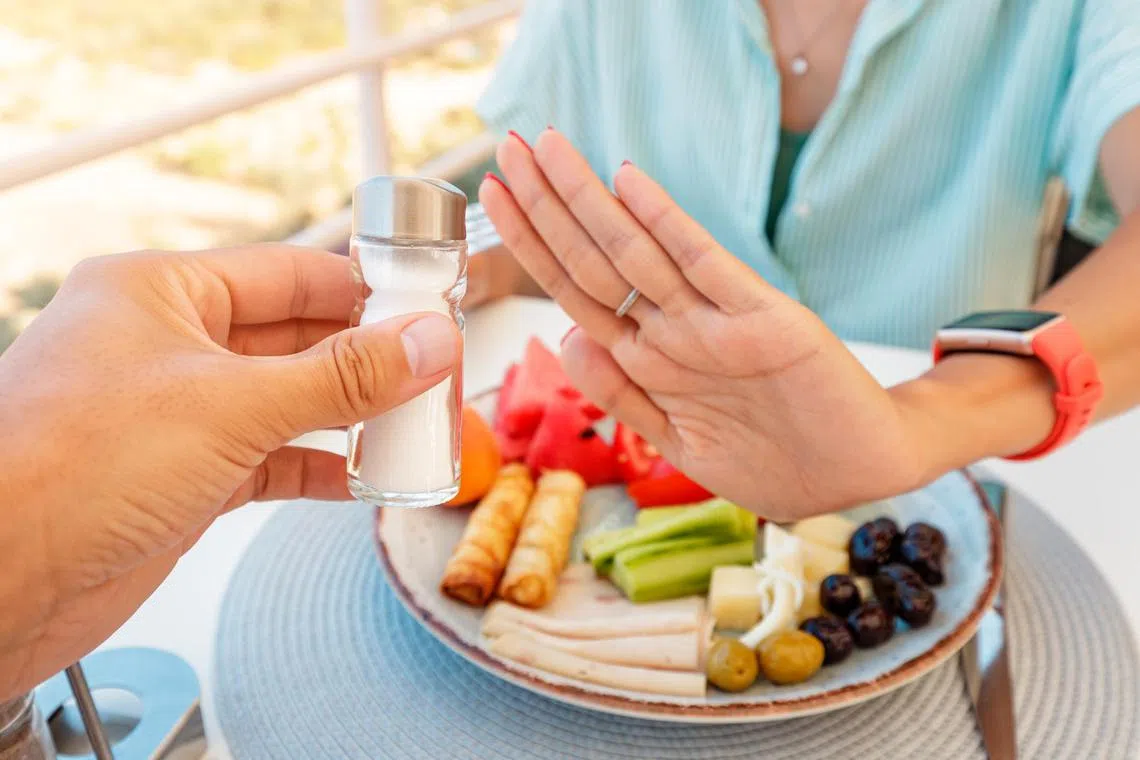World off track on goal to reduce sodium intake: WHO
Sign up now: Get ST's newsletters delivered to your inbox

Eating too much sodium, or salt, increases the risk of heart disease, stroke and premature death.
PHOTO: ISTOCKPHOTO
Follow topic:
GENEVA - The world is unlikely to hit the global target of 30 per cent reduction in sodium consumption by 2025, the World Health Organisation (WHO) says, blaming government inaction.
Only 3 per cent of the world’s population is protected by mandatory policies to reduce sodium, while three-quarters of WHO member countries, including Britain, fail to fully implement such guidelines, the health body said in a report on Thursday.
While sodium is an essential nutrient found in table salt, eating too much of it
“We cannot fail this completely achievable and affordable public health goal,” said Dr Francesco Branca, director of the WHO’s department of nutrition for health and development.
Only nine countries currently have a comprehensive package of recommended policies. The global average per capita intake of salt is 10.8 grams a day – more than double the WHO recommendation
Ready meals and eating out can amplify health risks because consumers can’t control how much salt is used. In the United Kingdom, where around a quarter of calories are eaten outside the home, people consume an average of more than 7 grams of salt a day. Meals sold at chains popular with busy office workers are often high in salt.
For example, Asian food chain Itsu’s classics sushi set delivers more than half of the WHO-recommended daily maximum, according to nutritional information on its website. Plant-based options can be even saltier – the veggie sushi collection from the chain contains almost 6 grams of salt – more than the recommended daily amount.
Founder of Itsu Julian Metcalfe said that most of the chain’s dishes are low in both fat and calories, while the high salt content usually comes from miso and seaweed, both considered healthy ingredients.
Sandwiches at chains like Greggs often contain around 40 per cent of the recommended amount. A spokesman for Greggs did not immediately respond to a request for comment.
The government has required large chains to add calorie content to menus and food packaging, but guidelines for the food industry, including restaurants and cafes, to reduce salt, sugar and calories have so far been voluntary.
Supermarkets are also failing to make sufficient progress in the United Kingdom. An analysis published by Oxford University in October found that, overall, the average salt content of food products sold at supermarkets showed no change between 2015 and 2020. BLOOMBERG

